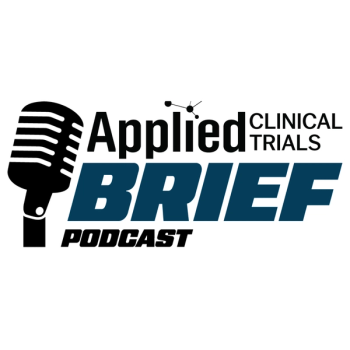Key Takeaways
- Tremfya Reduces Structural Joint Damage in PsA. Phase IIIb APEX trial results show that guselkumab significantly inhibited radiographic progression of joint damage at 24 weeks in patients with active psoriatic arthritis, as measured by the modified van der Heijde-Sharp (vdH-S) score.
- Improved Joint and Skin Symptoms Observed. A greater proportion of patients treated with Tremfya achieved ACR20 and ACR50 response rates and clear or almost clear skin compared to placebo, demonstrating its dual efficacy in treating both joint and dermatologic manifestations of PsA.
- First IL-23 Inhibitor to Show Joint Preservation Benefit. Tremfya is the first IL-23 inhibitor in its class to demonstrate statistically significant joint preservation in PsA, supporting its use as a long-term treatment option for disease progression management.
New late-stage results from the Phase IIIb APEX trial (NCT04882098) show that Tremfya (guselkumab) significantly slowed the progression of joint damage while improving joint and skin symptoms in patients with active psoriatic arthritis (PsA).1,2
APEX Trial Demonstrates Tremfya’s Efficacy in Slowing Psoriatic Arthritis Joint Damage Progression
Findings from the study, presented as a late-breaking abstract at the 2025 European Alliance of Associations for Rheumatology Congress, position Tremfya as a leading interleukin (IL)-23 inhibitor and reinforce its use for long-term joint preservation in PsA management, according to the study authors.
“In psoriatic arthritis, joint damage can begin early and progress quickly if left untreated, significantly impacting a patient’s ability to move, work and maintain independence,” study investigator Philip J. Mease, MD, director of Rheumatology Research at the Swedish Medical Center, said in a press release. “The results of the APEX study are promising as the data show guselkumab to be the only IL-23 inhibitor in its class that has inhibited the progression of structural damage in patients, providing new clinical insights for the psoriatic community and underscoring the need for safe, effective options that address the full burden of disease.”1
Tremfya’s Dual Mechanism and Regulatory Approvals
Tremfya was the first FDA-approved, fully-human, dual-acting monoclonal antibody to block IL-23 by attaching to the p19 subunit of IL-23 and to CD64, a receptor on cells that produce IL-23, which contributes to the pathogenesis of inflammatory diseases.
Tremfya has received FDA approvals for the treatment of adults with active PsA; for adults with moderate-to-severe plaque psoriasis who are candidates for systemic therapy or phototherapy; for adults with moderately to severely active ulcerative colitis; and for adults with moderately to severely active Crohn disease.3
APEX Study Design and Enrollment Criteria
- The multicenter, randomized, double-blind, placebo-controlled APEX trial enrolled patients with active PsA who were not previously treated with biologic drugs or who showed an inadequate response to standard therapies, such as conventional synthetic disease-modifying antirheumatic drugs, apremilast, and/or nonsteroidal anti-inflammatory drugs.
- The trial included a 24-week, double-blind, placebo-controlled period, a 24-week active treatment period, and a 12-week safety follow-up period.
- For the trial’s long-term extension, patients were administered an additional two years of active treatment prior to the final safety follow-up.
- The trial’s primary endpoint is percentage of participants achieving an American College of Rheumatology (ACR) 20 response at week 24, with secondary endpoints that included change from baseline in PsA modified Van Der Heijde-Sharp (vdH-S) total score at week 24, as well as various safety and tolerability measures.
- Enrollment criteria included having a diagnosis of PsA for at least six months prior to first administration of Tremfya; presence of active PsA defined as at least three swollen joints and three tender joints at screening and baseline and C-reactive protein greater than or equal to 0.3 milligrams per deciliter (mg/dL) at screening; greater than or equal to two joints with erosions on baseline radiographs of the hands and feet as determined by central read; at least one of either distal interphalangeal joint involvement, polyarticular arthritis without rheumatoid nodules, arthritis mutilans, asymmetric peripheral arthritis, or spondylitis with peripheral arthritis; presence of active plaque psoriasis with at least one psoriatic plaque of greater than or equal to two centimeters in diameter or nail changes consistent with psoriasis.2
Clinical Outcomes: Joint Damage, ACR Response, and Skin Clearance
The newly released data show that at week 24, patients with active PsA administered Tremfya experienced significant slowing of joint structural damage progression, such as joint erosions and space narrowing, as assessed by the PsA modified vdH-S score.
- Mean change from baseline to week 24 in the modified vdH-S score was 0.55 in patients administered Tremfya every four weeks (Q4W) and 0.54 among patients administered Tremfya every eight weeks (Q8W) compared to 1.35 among patients in the placebo cohort (p=0.002 for Q4W and p<0.001 for Q8W dosing versus placebo, respectively).
- A total of 67% of patients in the Q4W treatment cohort and 63% of patients in the Q8W cohort experienced no radiographic progression compared to 53% in the placebo cohort.
- Sixty-seven percent of patients in the Q4W cohort and 68% in the Q8W cohort achieved an ACR20 response at week 24 compared to 47% in the placebo cohort (p<0.001).
- Forty-one percent of patients in the Q4W cohort and 42% in the Q8W cohort achieved ACR50 at week 24 compared to 20% in placebo cohort.
- Seventy-three percent of patients in the Q4W cohort and 68% in the Q8W cohort achieved an Investigator’s Global Assessment score of 0/1 for clear or almost clear skin at week 24 compared to 31% in the placebo cohort.
Tremfya Sets New Standard for IL-23 Inhibitors in Psoriatic Arthritis
“With these results from the APEX study, Tremfya has set a new bar for joint preservation as the only IL-23 inhibitor proven to significantly inhibit structural damage in active psoriatic arthritis, an inflammatory arthritis that can develop in up to 30% of people living with psoriasis,” Terence Rooney, vice president, Rheumatology Disease Area Leader, Johnson & Johnson Innovative Medicine, said in the release. “The efficacy and safety profile of Tremfya offers psoriatic healthcare providers and patients an innovative option for disease control.”1
References
1. New data show TREMFYA® (guselkumab) is the only IL-23 inhibitor proven to significantly inhibit progression of joint structural damage in active psoriatic arthritis. News release. Johnson & Johnson. June 11, 2025. Accessed June 11, 2025. https://www.jnj.com/media-center/press-releases/new-data-show-tremfya-guselkumab-is-the-only-il-23-inhibitor-proven-to-significantly-inhibit-progression-of-joint-structural-damage-in-active-psoriatic-arthritis
2. A Study of Guselkumab in Participants With Active Psoriatic Arthritis (APEX). ClinicalTrials.gov. Updated May 23, 2025. Accessed June 11, 2025. https://clinicaltrials.gov/study/NCT04882098
3. Tremfya (guselkumab) real-world data analyses show greater treatment persistence than IL-17s in both bio-naïve and bio-experienced patients living with moderate to severe plaque psoriasis. News release. Johnson & Johnson. March 17, 2023. Accessed June 11, 2025. https://www.jnj.com/tremfya-guselkumab-real-world-data-analyses-show-greater-treatment-persistence-than-il-17s-in-both-bio-naive-and-bio-experienced-patients-living-with-moderate-to-severe-plaque-psoriasis





